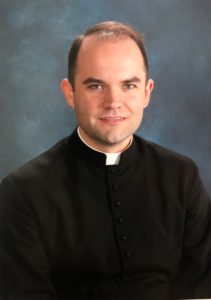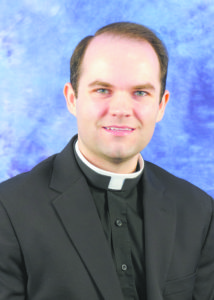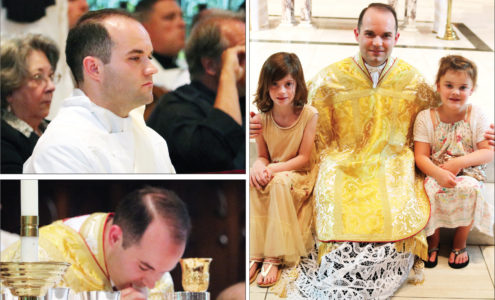
Father Aaron Williams
SPIRIT AND TRUTH
By Father Aaron Williams
In my previous article, I introduced the topic of the Solemn Liturgy as envisioned by the Fathers of the Second Vatican Council. Now, I wish to begin considering certain elements which the Council Fathers named as essential to that form of worship: the first and most fundamental of which is the active participation of the faithful. Sacrosanctum Concilium, the Dogmatic Constitution on the Sacred Liturgy, states, “Mother Church earnestly desires that all the faithful should be led to that fully conscious and active participation in liturgical celebrations which is demanded by the very nature of the liturgy” (14). The question, however, is how we are to define what constitutes this sort of participation. In recent years, it has been the trend to attempt to meet this standard of participation by making ‘jobs’ for people at Mass — a large number of Extraordinary Ministers of Holy Communion, dividing readings into sections particularly at school Masses so that several students can each read a portion, or only using musical selections which the congregation can easily sing without preparation.
While there is certainly legitimate room for lay participation in the liturgy in certain specific roles, the vision of the Second Vatican Council cannot be reduced to mere “activity”— such that we only consider people to be actively participating in the Mass if they have some particular and individual task. The Sacred Liturgy is the foremost place where we express the unity of the Church as the Mystical Body of Christ and thus the greatest participation in the liturgy can only be expressed in those ways that the Body acts as a whole and not as individual functionaries.
When the term “active participation” first appeared in a Papal document, it was in 1903 when Pope Saint Pius X wrote to the faithful in the Diocese of Rome in order to encourage a greater and active participation, particularly by chanting the dialogues and responses at Mass.
In most places today, parishes never experience this sort of participation. But, Pope Pius X considered it a beautiful and fundamental expression of the unity of the Church to see the priest and faithful elevate their various dialogues into song—the chanting of the greeting (“The Lord be with you”) or the Preface of the Mass, as well as the various texts of the Ordinary (the “Gloria” or the “Sanctus”). But, more than that, his later successor, Pope Pius XII, commended the faithful to a participation which unified the mind to the voice. It was his desire that the faithful prepare themselves first by learning about the Mass and the articles of the faith that the liturgy expresses, so that when they make their responses at Mass, they do so with a real interior spirit of faith. To this end, he encouraged the publication of personal missals containing the readings and prayers of the Mass so the faithful could study them before Mass and pray with them during the Mass as a way of mentally joining themselves to the prayers that the priest speaks aloud in their name.
Pope Saint John Paul II underlined that participation in the liturgy is much more than speaking or gestures, but can even be deeply spiritual in the form of meditative silence. He says, “Worshippers are not passive, for instance, when listening to the readings or the homily, or following the prayers of the celebrant and the chants and music of the liturgy. These are experiences of silence and stillness, but they are in their own way profoundly active.”
What is truly regrettable, is that in the modern experience of the liturgy, many parishes treat the aim of active participation as a requirement to get people “involved” in various roles. But, this is really at its heart a hidden form of clericalism, or at least a lack of true understanding of the lay vocation to holiness. It is not just the sort of recognizable ministerial “roles” at the Mass which make us holy, as if the lay faithful “miss out” on something deeply spiritual by not taking on particular tasks, or as if only the priest has access to the highest form of participation. Rather, true participation — even on the part of the priest — requires a spiritual closeness to the Lord in the Mass.
For this, we should take as our model the Blessed Virgin Mary. She gives the greatest image of active participation by her quiet observance of the Crucifixion. It was not her who was nailed to the Cross, but her own participation was heightened and perfected by uniting her heart to the sacrifice of her Son. It should be our aim above all else that, in the Mass, we can achieve this level of participation by our awareness of the prayers and readings, our interior prayer, our disciplined preparation before Mass. We are not mere spectators, nor are we actors — we are members of the Body of Christ in the Mass and the members of the Body must be united in their heart to the mind of the Head, who is Christ the Lord.
(Father Aaron Williams is the parochial vicar at Greenville St. Joseph Parish and serves as the liaison to seminarians for the Office of Vocations.)


